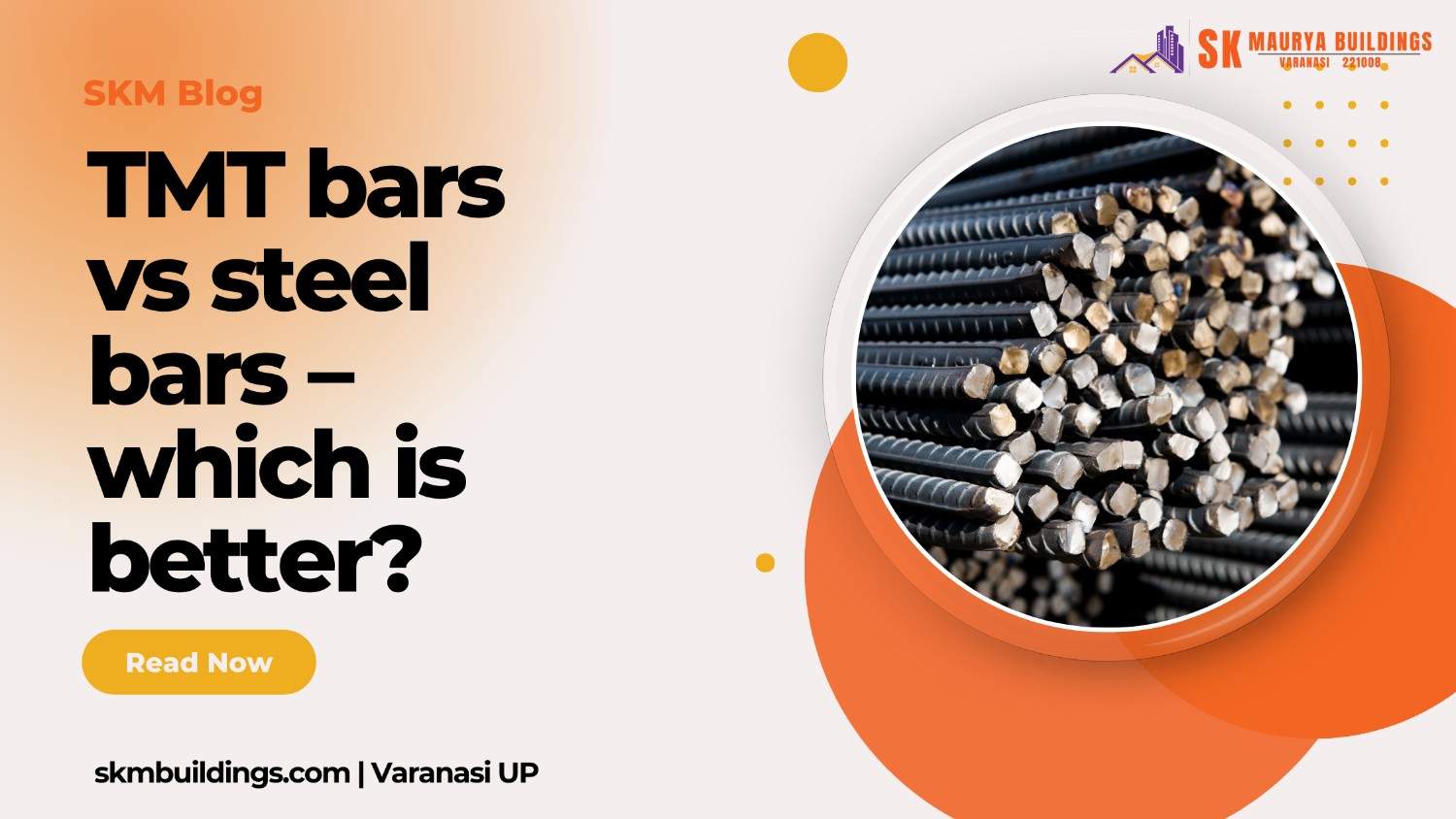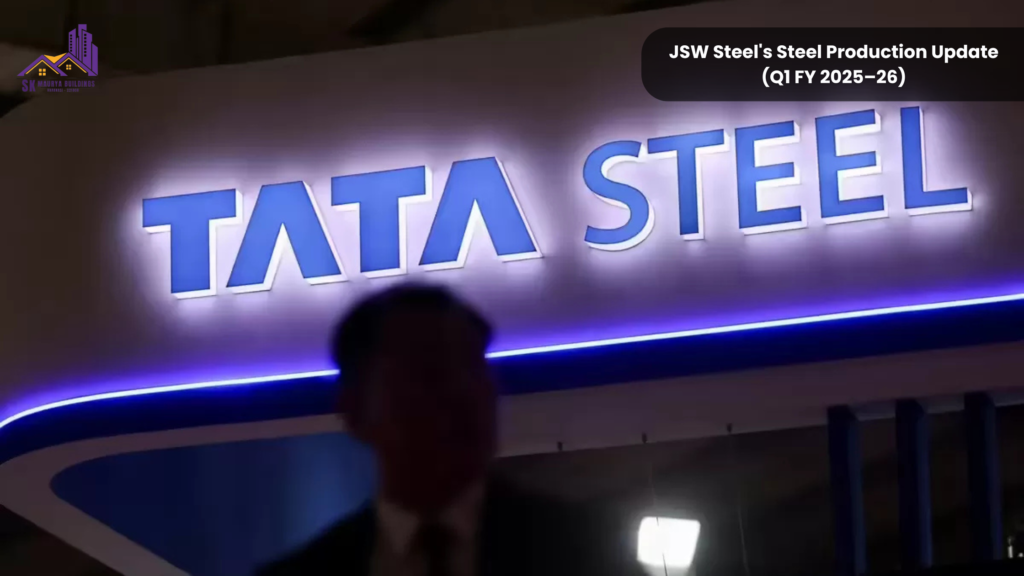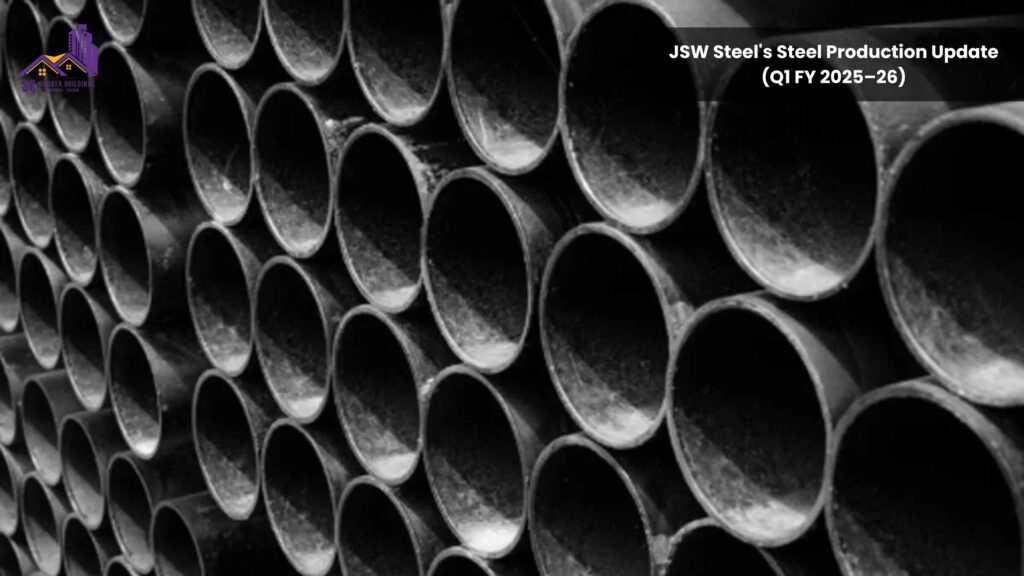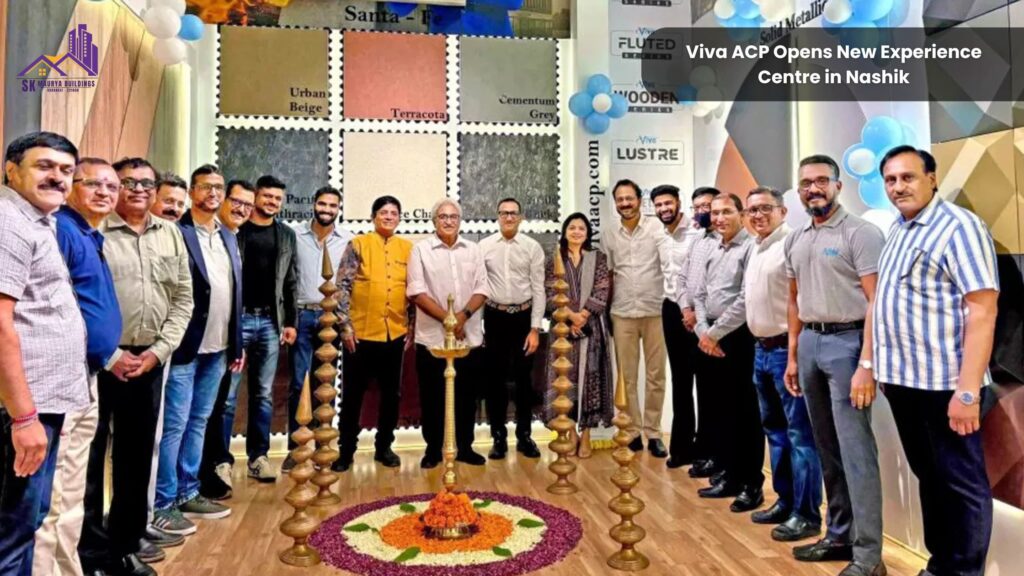When building a strong and lasting structure, the choice of reinforcement material is key. Many wonder if TMT bars vs steel bars are the better option. Both are important in construction but their properties, strength and durability are worlds apart. Knowing the difference will help you make the right decision for your home or commercial project.
In this blog we will compare TMT bars vs steel bars, their benefits, uses and key differences. Whether you are building a house, a bridge or a high rise building the right choice can mean safety, durability and cost savings. By the end of this you will have a clear idea which one is best for you. Let’s start!
Table of Contents
What are TMT Bars?
TMT bars, or Thermo-Mechanically Treated bars, are high strength steel reinforcement bars widely used in construction industry due to their properties. These bars are designed to provide more strength, flexibility and durability, thus an ideal for concrete structures. TMT bars are used in high rise buildings, bridges, dams, roads and other heavy loaded structures. They have numerous advantages over traditional reinforcement material and contribute to safety and life of structure.
How are TMT Bars Made?
TMT bars are made using thermo-mechanical treatment, which involves three stages: quenching, self-tempering and atmospheric cooling. This process creates a tough outer surface and a soft core, making it strong and ductile. The ribbed design of TMT bars improves its bonding with concrete, reduces the risk of structural failure.
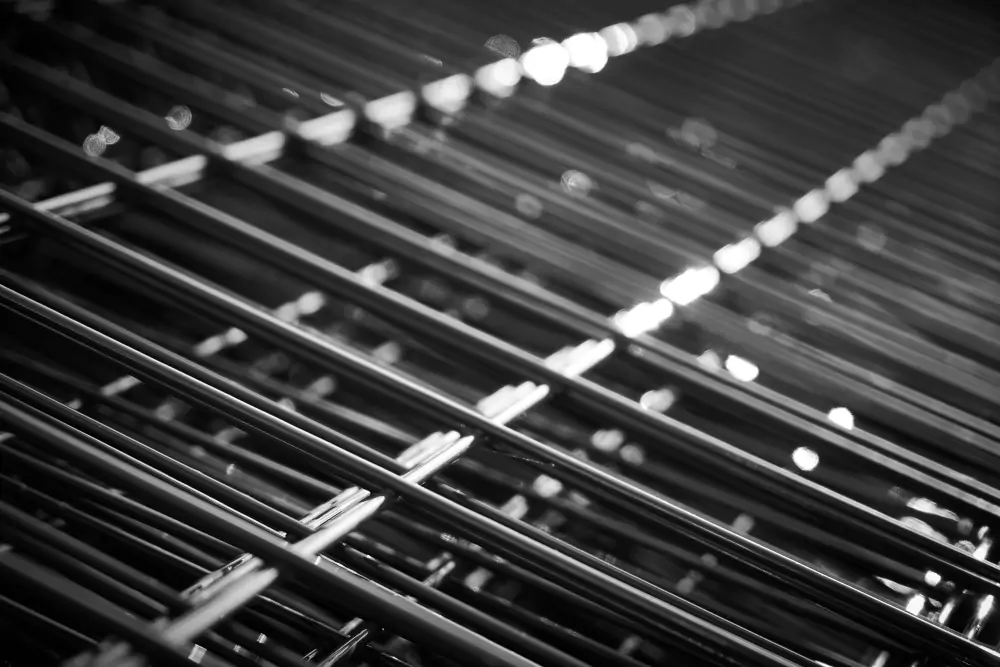
Key Features of TMT Bars in Construction
- High Strength & Durability: TMT bars have high tensile strength making it ideal for high rise buildings and heavy structures.
- Corrosion Resistance: Unlike traditional steel bars, TMT bars resist rust and moisture damage, increases the life of structure.
- Earthquake Resistance: Its flexibility helps to absorb shock waves during earthquake, reduces the risk of collapse.
- Fire Resistance: TMT bars can withstand high temperatures, makes it safer for fire prone areas.
- Better Bonding with Concrete: The ribbed pattern gives a better grip with concrete, enhances structural stability.
What are Traditional Steel Bars?
Traditional steel bars, also referred to as mild steel bars or plain round bars, were the primary reinforcement material used in construction before the development of advanced reinforcement materials like TMT bars. These bars are made from low carbon steel, which gives them certain characteristics that differentiate them from modern steel reinforcement materials. While traditional steel bars have been widely used in construction for decades, they come with certain limitations in terms of strength, durability, and performance, especially when compared to more advanced alternatives such as TMT bars.
How are Traditional Steel Bars Made?
Traditional steel bars are made through a simple rolling process where molten steel is shaped into cylindrical bars. Since they don’t have thermo-mechanical treatment, they have lower tensile strength and prone to corrosion. They are less flexible and not suitable for earthquake prone or heavy loaded areas.
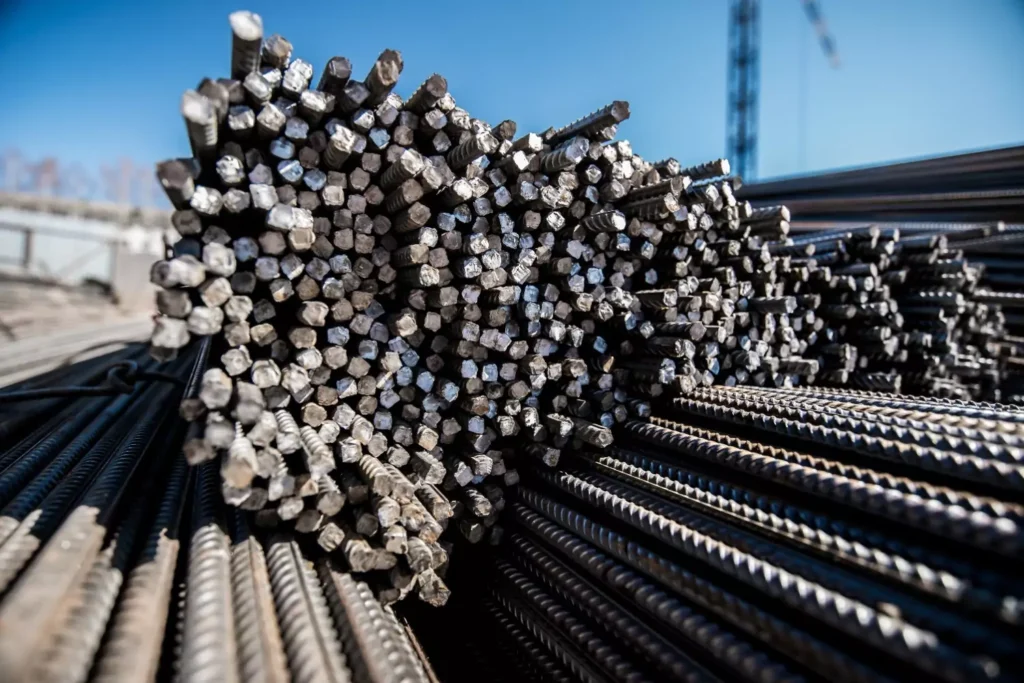
Limitations of Traditional Steel Bars in Construction
- Less Strength: These bars have less tensile strength than TMT bars, not suitable for modern high rise buildings.
- Poor Bonding with Concrete: The smooth surface doesn’t grip concrete well, increases the risk of cracks and structural instability.
- Corrosion Prone: Traditional steel bars rust quickly when exposed to moisture, reduces the life of the structure.
- Limited Fire & Earthquake Resistance: They can’t withstand extreme temperatures or seismic movements, not suitable for disaster prone areas.
Comparative Analysis: TMT Bars vs. Traditional Steel Bars
1. Strength & Durability
- TMT Bars:
TMT bars are engineered to be stronger and flexible than traditional steel bars. The controlled quenching and tempering process gives the bars their unique properties. They have high tensile strength to withstand high pressure and tensile forces. So TMT bars are ideal for high rise buildings, bridges, industrial plants and other heavy load structures. They can bend without breaking so are less prone to cracking under stress and hence longer durability. - Steel Bars:
Mild steel bars have lower tensile strength and no flexibility like TMT bars. Mild steel bars are ok for small, low rise buildings or light construction projects but not for structures that will carry heavy loads or stress over time. They will bend and may not hold their integrity under heavy loads which can compromise the safety and stability of the building.
2. Corrosion Resistance
- Steel Bars:
Steel bars especially mild steel are more prone to rust and corrosion. In areas of high humidity or near saltwater, the risk of corrosion increases and the bars will degrade over time. Rust weakens the steel, reduces its strength and stability and may cause costly repairs. Corrosion of steel bars not only compromise the safety of the structure but also increases long term maintenance cost significantly. - TMT Bars:
One of the best feature of TMT bars is their corrosion resistance. TMT bars are designed to withstand harsh environment, especially in coastal areas or areas of high humidity. The surface of TMT bars is hardened which provides a protective layer that prevents moisture from entering and rust from forming. This corrosion resistance extends the life of the structure, reduces the need for frequent repairs and maintenance.
3. Earthquake & Fire Resistance
- TMT Bars:
TMT bars have high ductility, so can absorb a lot of seismic force. This is very important for buildings in earthquake prone areas as they can bend without breaking and resist seismic shocks. Moreover TMT bars have better fire resistance than steel bars. They can withstand higher temperatures without loosing their structure and are safer in case of fire and hence safer for the occupants of the building. - Steel Bars:
Steel bars lack the flexibility of TMT bars, so are more prone to cracking under seismic stress. In case of an earthquake, structures reinforced with steel bars may suffer severe damage or failure as the bars cannot bend under stress. Steel has lower melting point than TMT bars so are more vulnerable in fire situation. Under high temperature steel bars loose their strength and can lead to catastrophic failure of the structure.
4. Bonding with Concrete
- TMT Bars:
TMT bars have ribbed surface which improves the mechanical bond between the reinforcement bars and concrete. This increased grip between the two helps in distributing the load evenly throughout the structure and reduces the chances of cracks in the concrete. The better bonding between TMT bars and concrete ensures the structure remains stable and strong over time even under heavy loads and stress. - Steel Bars:
Steel bars have smooth surface which leads to poor bonding with concrete. Without a good mechanical bond the concrete and steel may not work together efficiently and can result to cracks or weakness in the structure. As the concrete ages the lack of good bond can lead to delamination and compromise the overall integrity of the structure. This is more problematic in big construction where the risk of structural failure is higher.
5. Cost-Effectiveness
- TMT Bars
TMT bars may cost more upfront compared to mild steel bars but they will save you in the long run. Their superior strength, corrosion resistance and durability means less repairs and replacements, they are cost effective for large projects where safety and longevity of the structure is paramount. They can withstand harsh conditions like high seismic and fire resistance which minimizes the risk of structural damage and thus saving on expensive reconstruction or reinforcement work. TMT bars is a better investment for big projects. - Steel Bars
Steel bars are cheaper than TMT bars which may be a good option for small projects with tight budget. But due to lower tensile strength and susceptibility to corrosion they require frequent maintenance, repairs and replacements which will cost you more in the long run. Over time the need to address rust, cracks and bending will add up to the total cost of the project. For projects with long duration or extreme condition, steel bars may prove to be more expensive in the long run due to ongoing maintenance needs.
Applications in Construction
TMT bars vs steel bars is a crucial decision for the strength and longevity of a structure. Both have specific uses in construction industry but TMT bars have replaced traditional steel bars due to their superior properties.
1. Residential & Commercial Buildings
- TMT Bars: Used in construction of houses, apartments and office buildings due to their high tensile strength, earthquake resistance and durability. Their ribbed surface ensures a strong bond with concrete, reducing the chances of cracks.
- Traditional Steel Bars: Earlier mild steel bars were used in small scale construction but now are considered outdated due to their low strength and poor bonding capacity.
2. Bridges & Flyovers
- TMT Bars: Essential for bridges and flyovers where high load bearing capacity is required. Their corrosion resistance ensures longevity even in humid and coastal areas.
- Traditional Steel Bars: Not suitable for large infrastructure projects as they tend to rust and weaken over time.
3. Dams & Marine Structures
- TMT Bars: Used in dams, ports and marine structures due to their corrosion resistant properties. They can withstand moisture and saline water exposure making them ideal for water based projects.
- Traditional Steel Bars: Highly prone to rusting in water heavy environments reducing the life of structure.
4. Industrial & Power Plants
- TMT Bars: Used in factories, warehouses and power plants where extreme conditions like high temperature and heavy loads are common. Their fire resistance and strength makes them a preferred choice.
- Traditional Steel Bars: Less effective in such applications due to lower heat resistance and strength.
5. Roads & Highways
- TMT Bars: Used in reinforced concrete roads, flyovers and highway infrastructure to ensure stability and durability under heavy traffic loads.
- Traditional Steel Bars: Not recommended as they are weak and have low life.
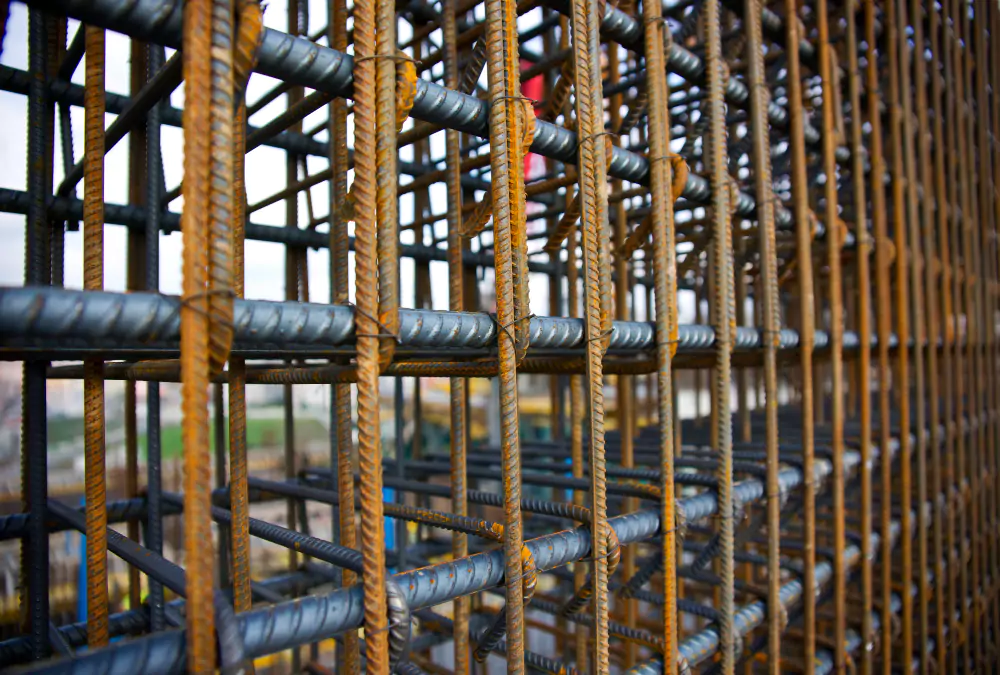
Also Read: Best Quality TMT Bars for House Construction: Guide
Why SK Maurya Building Materials for Best TMT Bars?
When it comes to choosing reinforcement for your construction projects TMT bars vs steel bars is the comparison to make. At SK Maurya Building Materials we bring you only the best quality TMT bars from top brands like Jindal Panther, Ambuja, ACC and you will get unmatched strength, durability and safety. As an authorised dealer with over 25 years of experience we provide high grade TMT bars that offers superior earthquake resistance, corrosion protection and long lasting performance—for homes, bridges and high rise buildings. Choose SK Maurya Building Materials for trusted quality, competitive price and expert advice—because your construction deserves the best!
Conclusion
When comparing TMT bars vs. steel bars, TMT bars clearly emerge as the superior choice for modern construction. Their high tensile strength, flexibility, corrosion resistance, and earthquake-proof properties make them ideal for residential, commercial, and infrastructure projects. Unlike traditional steel bars, TMT bars provide long-lasting durability while reducing maintenance costs. Whether you’re building a house, bridge, or industrial structure, choosing high-quality TMT bars ensures better safety and structural integrity. For the best TMT bars in Varanasi, trust SK Maurya Building Materials, your authorized dealer of top brands like Jindal Panther, Ambuja, and ACC.
FAQs
-
What is the difference between TMT bars and traditional steel bars?
TMT bars undergo a thermo-mechanical treatment process, making them stronger, more flexible, and resistant to corrosion. Traditional steel bars, on the other hand, lack these advanced properties and are prone to rusting and breakage over time.
-
Why are TMT bars preferred for construction?
TMT bars offer higher strength, better bonding with concrete, and earthquake resistance, making them perfect for residential and commercial buildings, bridges, and highways. Their durability also reduces long-term maintenance costs.
-
Are TMT bars more expensive than traditional steel bars?
While TMT bars may have a slightly higher upfront cost, they provide better strength, longevity, and low maintenance, making them a cost-effective choice in the long run compared to traditional steel bars.
-
Can TMT bars be used in all types of construction?
Yes, TMT bars are used in houses, apartments, skyscrapers, dams, roads, and even marine structures due to their high tensile strength and corrosion resistance, ensuring long-term durability.
-
Where can I buy the best TMT bars in Varanasi?
For high-quality TMT bars from trusted brands like Jindal Panther, Ambuja, and ACC, visit SK Maurya Building Materials in Varanasi. As an authorized dealer, they provide top-grade materials at the best prices for all your construction needs.


